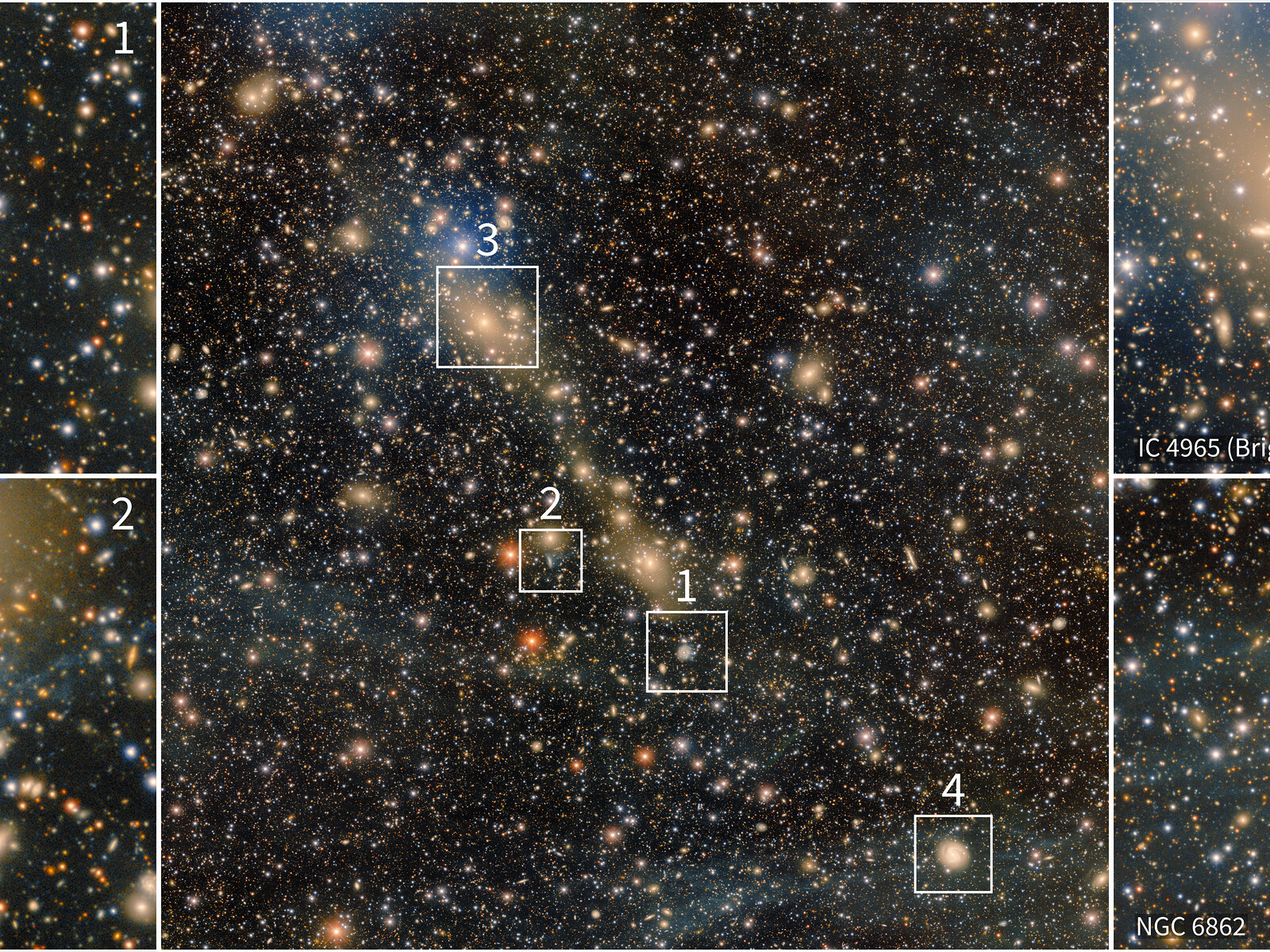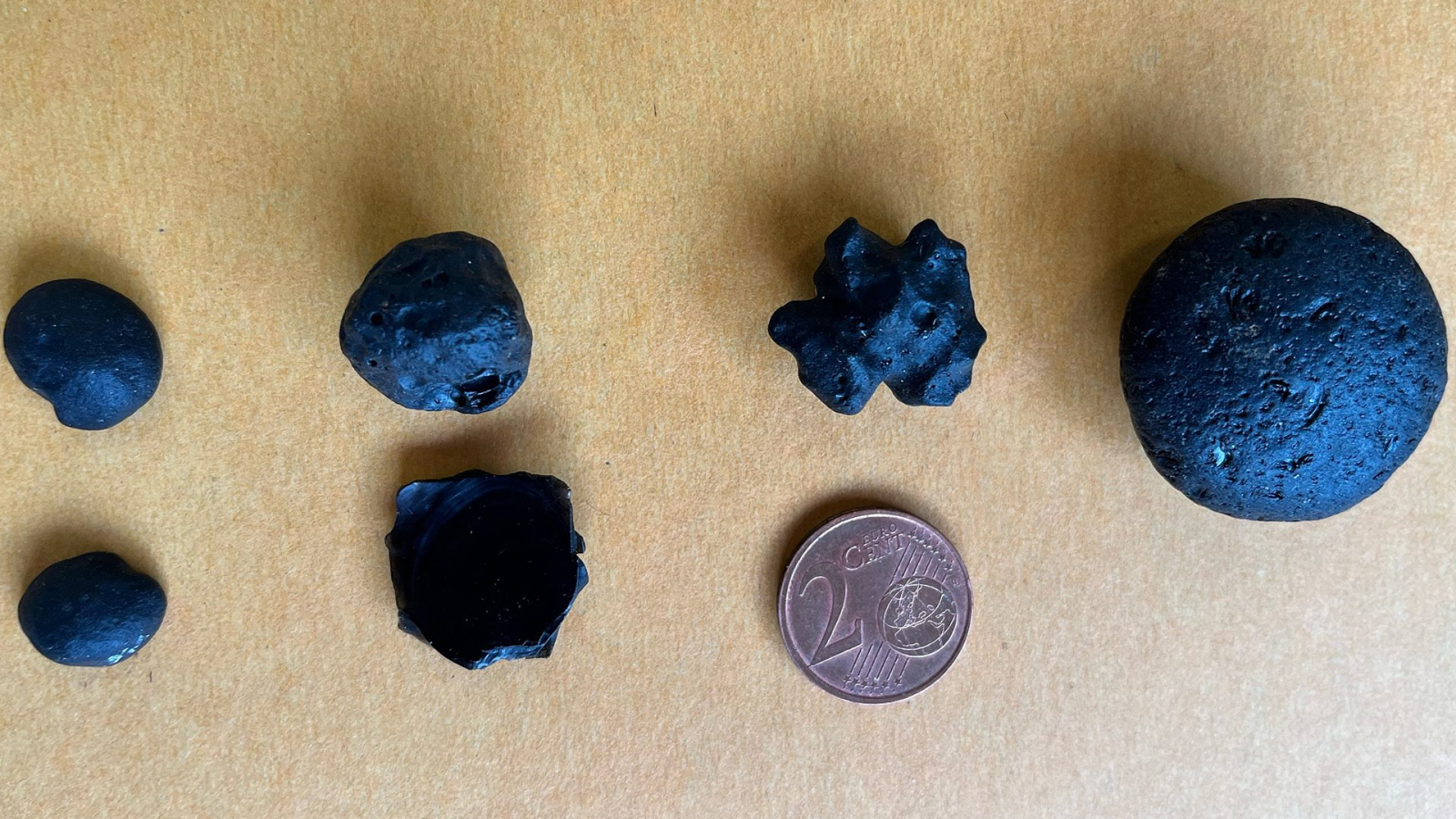Astronomers have spotted two massive galaxies locked in a cosmic tug-of-war 700 million light-years from Earth — and for the first time in such a nearby galaxy, watched as a faint stream of stars is being pulled from one into the other.
The observations, made in the galaxy cluster Abell 3667, revealed a faint, million light-year-long bridge of stars connecting its two brightest galaxies. Astronomers say the cluster is actually the result of two smaller clusters that began merging about a billion years ago, each with its own dominant central galaxy. As these giants — and their satellite galaxies — continue to merge, the bridge of stars between them offers rare insights into the clusters’ history and the powerful gravitational forces at play.
“This is the first time a feature of this scale and size has been found in a local galaxy cluster,” Anthony Englert, a Ph.D. candidate at Brown University in Rhode Island, who led a new paper describing the observations, said in a statement. “It was a huge surprise that we were able to image such a faint feature.”
The bridge is made of intracluster light, or ICL, a diffuse glow from stars that have been stripped from their home galaxies by intense gravitational forces. Englert and his team were able to detect this dim bridge by stacking 28 hours of observations taken over several years using the Dark Energy Camera at the Cerro Tololo Inter-American Observatory in Chile.
“It was just a happy coincidence that so many people had imaged Abell 3667 over the years, and we were able to stack all of those observations together,” Englert said in the statement.
At the top of the bridge lies the lenticular (disc-shaped) galaxy IC 4965, along with a small group of galaxies that are still falling into the cluster. At the bottom of it is JO171, a striking “jellyfish galaxy” named for the long tendrils of gas trailing from one side. As it merges into Abell 3667, JO171 is being stripped of gas, shutting down star formation in part of its ring-like structure, according to the statement.

Beyond its visual beauty, the light bridge also provides a valuable probe of dark matter, the invisible substance believed to make up roughly 80% of the universe’s mass. Because intracluster light tends to trace the same paths as dark matter, it offers an indirect way to map its distribution, astronomers say.
“The distribution of this light should mirror the distribution of dark matter, so it provides an indirect way to ‘see’ the dark matter,” study co-author Ian Dell’Antonio of Brown University said in the statement.
The study also highlights the kind of discoveries that are expected to soon become routine with the upcoming Vera C. Rubin Observatory, scheduled to begin full operations later this year or in early 2026. Rubin’s Legacy Survey of Space and Time (LSST) will map the southern sky in unprecedented detail over a 10-year period using the world’s largest digital camera, bringing to light galaxy clusters like Abell 3667.
“What we did is just a small sliver of what Rubin is going to be able to do,” Englert said in the statement. “It’s really going to blow the study of the ICL wide open.”
This research is described in a paper published Aug. 5 in The Astrophysical Journal.
Source link

